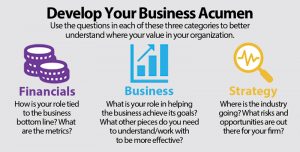The Top Non-Technical Skill Structural Engineers Need in an Evolving AEC Industry
In 1996, a bespectacled nerdy high school student leaped out of her car with a movie rental. She slid in the rain, dashing to the Blockbuster drop-off a mere minute before closing. Her singular focus: to return the movie and avoid the late fees that cost more than the initial rental. That teenager was me.
At the time, Blockbuster had a virtual monopoly on movie rentals, despite lackluster service and grumbling by customers about the late fees that were much more than the initial rental cost. Then, one year after my rainy-day dash, Reed Hastings founded Netflix, in part due to frustration with the $40 fine he acquired at Blockbuster. In its early stages, Netflix had no late fees and sent DVDs straight to your house for a flat monthly rate.
At first, the new business model appeared to be small potatoes to the video rental giant. Blockbuster peaked in 2004, with 9000 stores globally and $5.9 billion in revenue that year. However, by 2005 the company lost half its market value while Netflix took off. Today, after 16 years of decline, there is only one Blockbuster store remaining.
Adapt or Fail
Business experts have noted multiple points at which Blockbuster could have changed its trajectory, a decline that was both foreseeable and preventable. Yet, in analyzing what happened, a pattern emerges of contentment with the status-quo and blinders when it comes to industry shifts. For example, business plans were driven based on past experience in product design to business development, and new innovations were overlooked.
That same culture permeates many structural engineering firms, creating a general resistance to adaptation and a preference to uphold the status quo. For many organizations, the business model, client acquisition strategies, and the transactional nature of work relationships are not considered potential innovation areas. One need look no further than the industry’s struggles with the shift to work-from-home to see significant change resistance and, in some cases, a rigidity incompatible with adaptation, let alone innovation.
Blockbuster failed because when the whirlwinds of change swept through their industry, they did not adapt. The same can happen to you and your firm without keeping your pulse on what is going on far beyond your firm in the global business environment driving the broader AEC industry. The key to successful adaptation is your ability to understand and effectively communicate your value proposition to everyone you work with: peers, managers, and clients.

Value Propositions
Many structural engineers have little knowledge of the business aspects of the industry in the Figure. Those blinders create a disadvantage when it comes to understanding your value. No one wants a stagnant career or to work in a firm in a Blockbuster-style slow-and-steady demise; however, that is EXACTLY what happens when you lack business knowledge.
You are in the business of structural engineering. Without knowing your business value, you are flying blind when it comes to growth paths. That value determines if you get hired, get a raise or promotion, and the amount of influence you have at work. It determines if you work on high- or low-profile projects. Shifts in what is most valued can also be triggered by global industry changes like those we have experienced over the last 18 months.
Determining Your Value
Value is not determined through self-reflection. Instead, it is in the eye of the beholder. Like feedback, your value is determined through input from others. Particularly when market shifts accelerate, soliciting input directly from clients, peers, and managers ensures you are on the same page about your specific value proposition. Those insights show you how to adapt to leverage and learn the skills and strategies that keep you relevant.
Try this exercise to start the conversation about your value to your firm:
- Create a list of your weekly work activities.
- Highlight the 3-5 activities that most contribute to your role and/or success of your organization.
- Tell your manager(s) you are working on “maximizing your productivity and value to your organization by increasing your highest-value contributions.” Show them the list and ask for input. Do they agree? What do they see as your most valuable attributes?
- Repeat this exercise with coworkers or others you work with, considering patterns in the data.
Articulating Your Value
Asking directly for input gives you immediate data on your value and sometimes even exact words you can share with others about your effectiveness in your role. It eliminates false assumptions and replaces them with actual data about where your true value lies.
Knowing your value is the first step in articulating it in the various work contexts to different stakeholders. Once the data is gathered, the next step is to learn the skillsets necessary to articulate it within the business context of your organization and the AEC industry at large. This skill set is not just necessary to have an adaptation advantage; it sets the stage to position you as a leader in structural engineering and beyond.■
